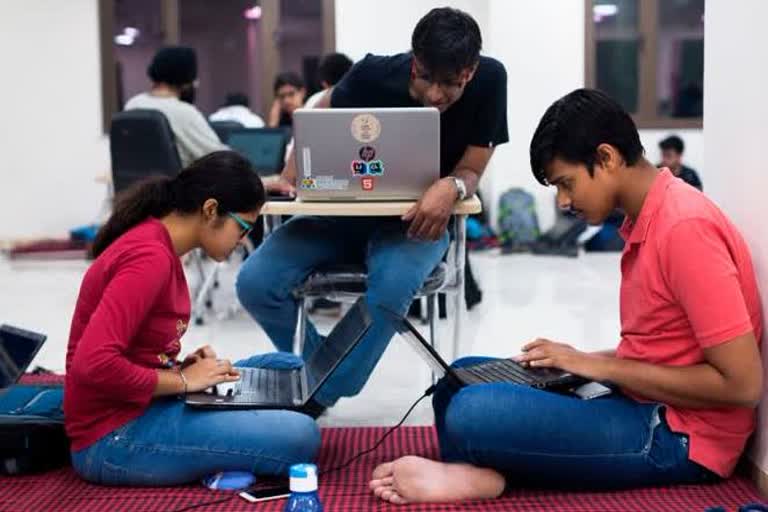Bengaluru: India on Wednesday introduced major reforms in its education sector by replacing its 34-year-old education policy with the New National Education Policy (NEP) of 2020.
The NEP draft, prepared by a panel of experts led by former Indian Space Research Organisation (ISRO) chief Dr. K Kasturirangan, especially aims to revive the higher education system in order to provide right skillset to students and bridge the gap between the academic world and industry demands.
The NEP 2020 seeks to create a single regulator for entire higher education (excluding medical and legal) -- Higher Education Commission of India – which will help in granting academic, administrative and financial autonomy to institutions.
Speaking to ETV Bharat, one of the committee members that drafted the policy, Dr. MK Sridhar, said that the new policy has designed the entire academic architecture in such a way that it can very easily deliver on the needs of the industry.
“Our industry constantly keeps changing. Change is permanent here. However, in our country, education was a bit slow in keeping up with this change. But now with this kind of autonomy with institutions, they will be able to catch up with industry trends in a fast-track mode,” he added.
Read more: US economy shrank at record-breaking 33% rate last quarter
Explaining on it further, he said that the new policy will allow different institutions to come together and design courses specifically to cater to a need of any particular industry as and when it arises.
Not just industry and students, the policy could prove to be path-breaking for educational institutes, too. “After becoming autonomous, colleges and universities should also start getting lot of support from societies and students, which would support their financial viability even further,” said Sridhar.
Cafeteria approach
The new education policy is especially being considered ‘transformative’ as it aims to provide students with increased flexibility in term of the combination of subjects one can study. “There will be no rigid separation between arts and sciences,” the government said in the draft.
“The kind of cafeteria approach that has been brought in will bring the much-needed flexibility in the education system,” said Sridhar, adding: “The new education structure will ultimately not just take care of a student’s first job, but also of his/her subsequent jobs.”
The cafeteria approach basically refers to the practice of allowing people to choose from a variety of different options.
The 6% target
Under the new education policy, the central government has also set an ambitious aim to increase public investment in the education sector to 6% of gross domestic product (GDP) with the help of states.
“6% of GDP would be possible in an incremental way. The government is already spending around 4.4% of GDP... whatever extra they want to spend needs to be prioritised in order to attain the 6% target,” said Sridhar.
Making India a ‘knowledge economy’
Assessing the long-term impact of the new education policy, Sridhar said he believes that the new education structure help India evolve into a ‘knowledge economy’.
“The products coming out of the new education system would be able to contribute more to the economy. Students would be able to contribute not just through their skills, but also through their attitude, value system as well as their competency,” he said.
(ETV Bharat Report)



